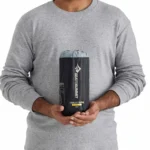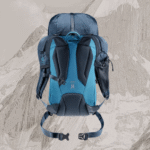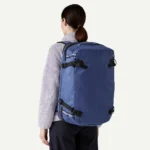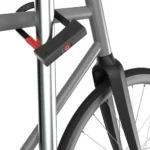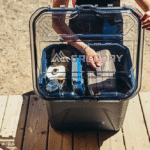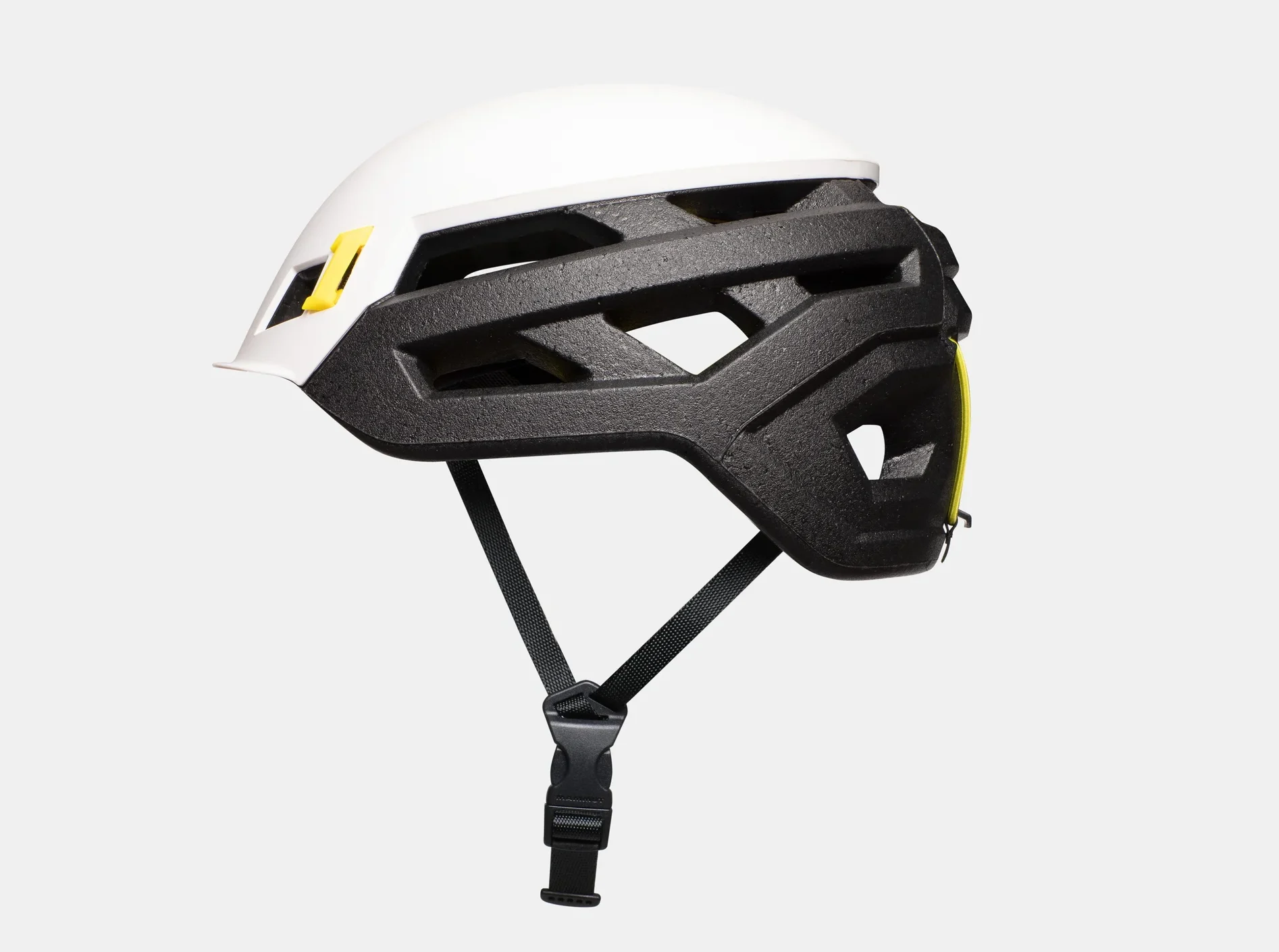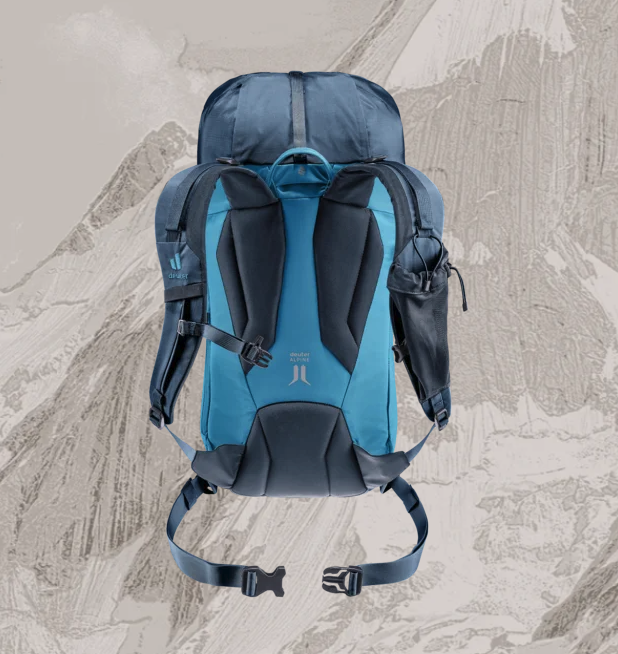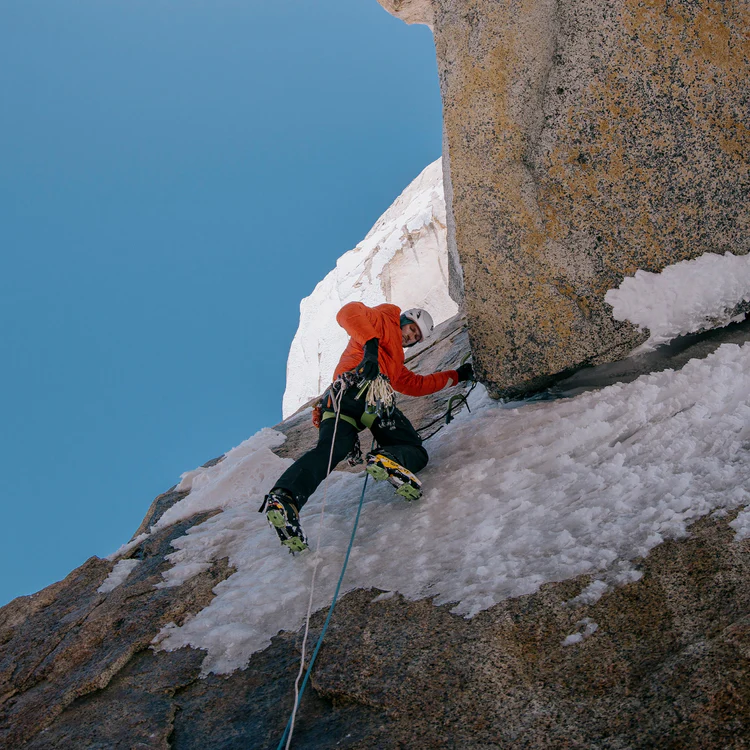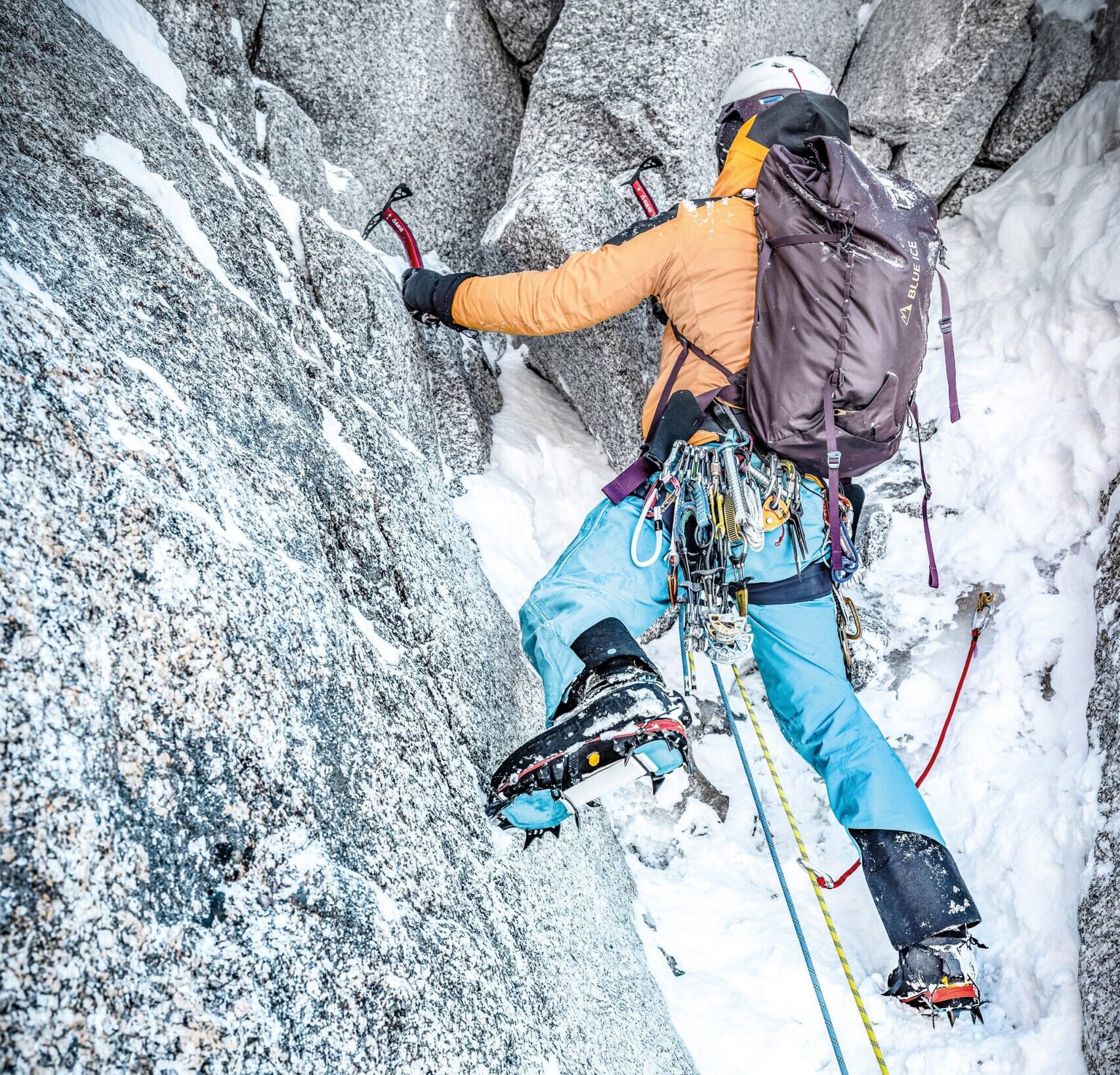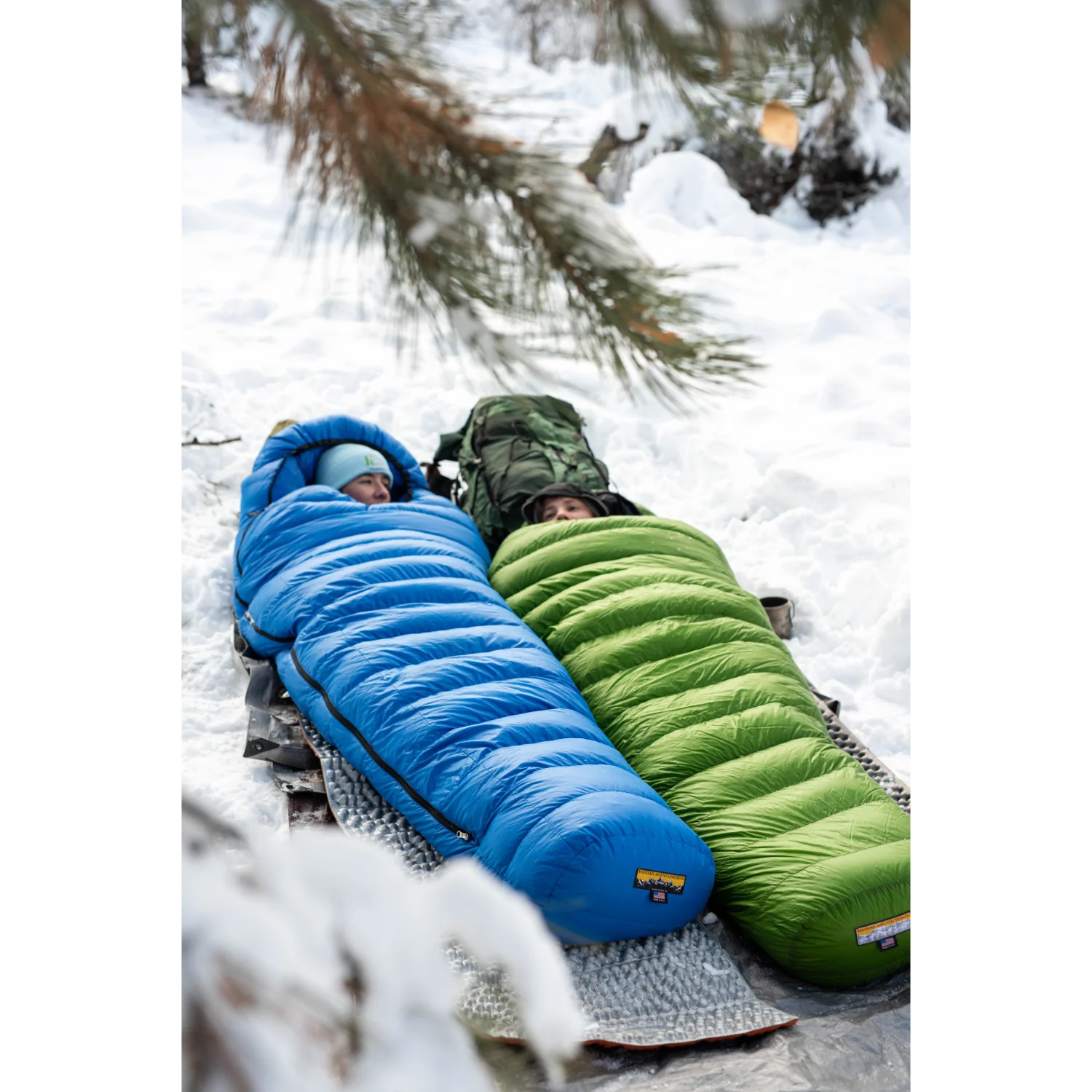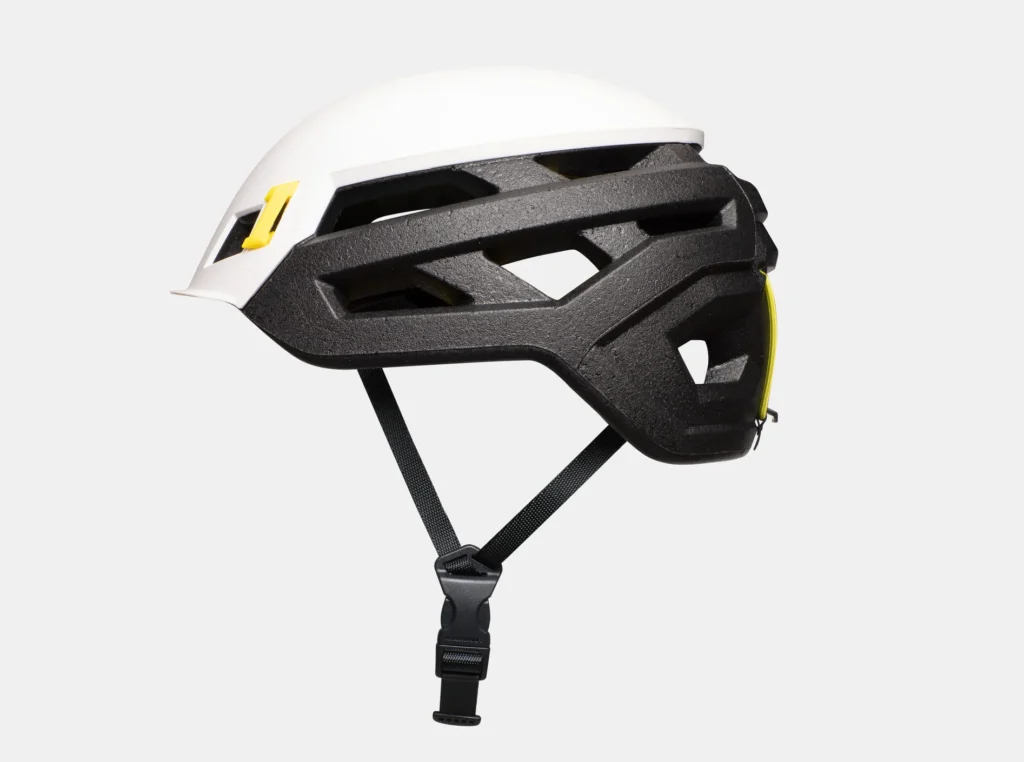
A Helmet That Balances Safety and Performance
The Mammut Wall Rider MIPS is a lightweight climbing helmet designed for alpine, trad, and multi-pitch climbers who want maximum protection without sacrificing comfort or ventilation. It combines a hybrid shell construction with MIPS (Multi-directional Impact Protection System)—a technology more commonly seen in cycling and snow sports helmets.
At just 225 grams, the Wall Rider MIPS is one of the lightest helmets in its class. But does it hold up to real-world abuse on rock, ice, and mixed terrain? We tested it across gritstone crags, alpine ridges, and long trad routes to find out.
Key Specifications
| Feature | Details |
|---|---|
| Weight | 225g (size M/L) |
| Shell Construction | EPP foam core with partial hard shell |
| Safety Tech | MIPS low-friction layer |
| Ventilation | 16 large vents |
| Adjustment System | Webbing harness with rear dial |
| Headlamp Clips | Yes (2 front, 2 rear) |
| Certifications | EN 12492, UIAA |
| Sizes Available | S/M (52–57 cm), M/L (56–61 cm) |
| Price | £130–£150 (varies by retailer) |
Design and Build Quality
The Wall Rider MIPS uses a hybrid construction that blends a lightweight EPP (expanded polypropylene) foam core with a partial polycarbonate hard shell. This design provides impact absorption while reinforcing high-wear areas like the crown and sides.
The MIPS liner is integrated between the foam and the webbing harness. It’s a thin, low-friction layer that allows the helmet to rotate slightly during an angled impact—reducing rotational forces that can cause brain injury.
Despite the added MIPS layer, the helmet remains exceptionally light and low-profile. The finish is clean, the materials feel premium, and the headlamp clips are secure without being bulky.
Fit and Comfort
The Wall Rider MIPS uses a webbing-based adjustment system with a rear dial. Unlike plastic cradle systems, the webbing lies flat against the head, reducing pressure points and improving breathability.
Fit Highlights:
- Two sizes cover a wide range of head shapes
- Rear dial allows micro-adjustments on the fly
- Minimal padding keeps weight down but remains comfortable
- Low-profile shape fits well under hoods and helmets
In testing, the helmet felt secure and stable, even during dynamic movement and head jams. The webbing system may take a few minutes to dial in, but once adjusted, it stays put without needing constant readjustment.
Ventilation and Breathability
With 16 large vents, the Wall Rider MIPS offers excellent airflow for warm-weather climbing. The open design allows heat to escape quickly, making it ideal for:
- Long multi-pitch routes
- Summer alpine ascents
- Intense sport climbing sessions
Even with the MIPS liner, the helmet remains cool and breathable. The EPP foam doesn’t trap heat like EPS, and the open sides allow for cross-ventilation.
In cold conditions, pairing it with a thin beanie or buff works well without compromising fit.
Safety and MIPS Technology
The standout feature of this helmet is the MIPS system. Originally developed for cycling and snow sports, MIPS is designed to reduce rotational forces during oblique impacts—something traditional helmets don’t address.
How MIPS Works:
- A low-friction liner sits between the helmet shell and your head
- During an angled impact, the liner allows the helmet to rotate slightly
- This reduces the rotational energy transferred to the brain
While MIPS adds a few grams and a small cost premium, it’s a significant safety upgrade—especially for alpine and trad climbers where falls can involve twisting or tumbling impacts.
The Wall Rider MIPS meets EN 12492 and UIAA standards, and the hybrid shell construction provides multi-directional protection without bulk.
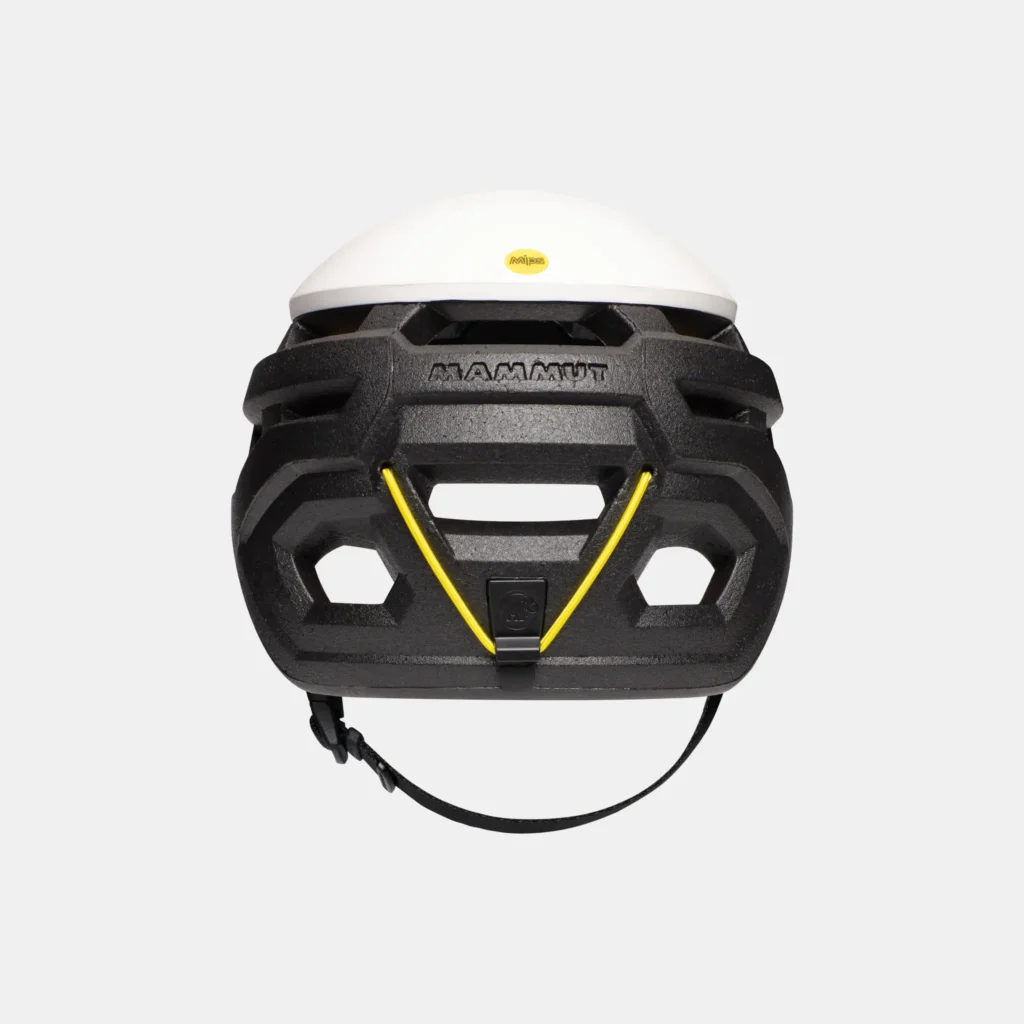
Performance in the Field
We tested the Wall Rider MIPS on:
- Gritstone trad routes in the Peak District
- Multi-pitch climbs in Snowdonia
- Alpine ridges in the French Alps
What We Loved:
- Featherweight feel—you forget you’re wearing it
- No pressure points, even after 6+ hours
- Stays put during dynamic movement and head jams
- Excellent ventilation on hot days
- Headlamp clips are glove-friendly and secure
What Could Be Better:
- Webbing harness takes longer to adjust than plastic cradles
- Minimal padding may feel sparse for some users
- Price is higher than non-MIPS versions
Overall, the helmet performed flawlessly across a range of conditions. It’s especially well-suited to long days on the wall, where weight and comfort matter most.
Durability and Maintenance
After months of use, the Wall Rider MIPS shows minimal signs of wear. The EPP foam resists dents better than EPS, and the partial shell protects high-impact zones.
The webbing and clips remain secure, and the MIPS liner hasn’t shifted or degraded. Cleaning is easy—just wipe down with a damp cloth and let it air dry.
While no helmet lasts forever, the Wall Rider MIPS feels like it will withstand multiple seasons of regular use.
Pros and Cons
Pros:
- Ultra-lightweight at just 225g
- MIPS technology for added rotational impact protection
- Excellent ventilation with 16 large vents
- Comfortable webbing harness with rear dial
- Durable EPP foam resists dents and dings
- Low-profile design fits under hoods and helmets
- Secure headlamp clips for alpine starts
Cons:
- Higher price than non-MIPS helmets
- Webbing harness takes time to adjust
- Minimal padding may not suit all users
- Not as protective as full hard-shell helmets for ice or industrial use
Comparison: Wall Rider MIPS vs Petzl Meteor
| Feature | Mammut Wall Rider MIPS | Petzl Meteor |
|---|---|---|
| Weight | 225g | 240g |
| MIPS | Yes | No |
| Ventilation | Excellent | Very good |
| Fit System | Webbing + dial | Plastic cradle + dial |
| Shell Type | Hybrid (EPP + shell) | EPS + polycarbonate |
| Price (UK) | £130–£150 | £90–£110 |
The Wall Rider MIPS offers better rotational protection and lighter weight, while the Meteor is more affordable and slightly easier to adjust. Both are excellent, but the Wall Rider wins on safety and alpine performance.
Final Verdict: Is the Mammut Wall Rider MIPS Worth It?
The Mammut Wall Rider MIPS is a top-tier climbing helmet that delivers on all fronts: weight, comfort, ventilation, and safety. It’s ideal for climbers who spend long days on the wall and want a helmet that disappears on the head but delivers when it counts.
While it’s more expensive than non-MIPS models, the added protection and premium build quality make it a smart investment for serious climbers. If you’re tackling alpine routes, trad climbs, or multi-pitch epics, the Wall Rider MIPS is one of the best helmets you can buy.
Rating: 9.4/10 Best for: Alpine climbers, trad leaders, and multi-pitch enthusiasts Avoid if: You want a budget helmet or prefer a plastic cradle fit system

